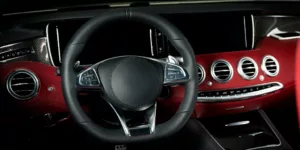According to the United States Department of Transportation, over 90 percent of road accidents are caused by human error. Driverless cars are the proposed solution to take humans out of the equation and reduce accidents on the road. As we move into the future, driverless cars have become a reality with many different grey areas to navigate.
There are issues revolving around laws and ethics that has many states stance differing from one another. Although there have been some federally imposed regulations, there are areas up for contention that leave decision making up to individual states. One example is that the National Highway Traffic Safety Administration is the dictator over automobiles but state agencies oversee the drivers. Since the automobiles do not have drivers, who has the legal responsibility to oversee driverless cars?
Although who will regulate the new technology of the road is still up for debate, production and use of driverless cars has continued to meet the public’s demand. All members of the general public are impacted by the grey areas that exist in this new realm of transportation. Whether as a passenger, pedestrian, or cyclist, it is important to know the ins and outs of what to expect when autonomous cars hit the commercial market in the anticipated year of 2020.
Accountability
Typically, understanding who is to blame for an auto accident is simple. When the operating driver is a piece of software that has made an error in its calculations, that line is blurred. The question is who is liable in the event of a crash, injury, or death, and how is justice served when pointing fingers at a robot? Volvo has taken the initiative to take full responsibility for its vehicles when they are operating in autonomous mode. However, other car companies are not quick to follow suit. Car manufacturers are suggesting that an investigation similar to a autopsy be done on the vehicle blamed for the accident. This would allow for a better understanding of if it was the mapping software company, a faulty part, or a car manufacturer error to make sure that the malfunction to blame is remedied by the correct party.
Deliveries
The rise in excitement of drones and driverless delivery trucks enabling online purchases to become instantly gratifying could pose some potential discussion points. Driverless trucks may be appealing to some companies to cut back on labor costs, but the delivery industry would still need a human to deliver the goods, as of right now. The question of many employees that work in freight is if the demand for delivery workers will decline with the rise of autonomous trucks and drones, leaving them unemployed.
The other major grey area is at the present moment there are no established air traffic control methods for small aircrafts such as drones. With increased congestion, the likelihood of two drones carrying packages colliding would potentially destroy two drones and two pieces of merchandise. Likely, the drone would be operated by a transportation company leaving both companies in the red. It raises the question, would there be development of a new type of product insurance that consumers would have to purchase to protect their investments for the safe instant arrival of online purchases?
Insurance
Currently, insurance rates are based on a human driver’s personal attributes, such as their driving history, age, number of claims, and others. There are a number of different ways to receive discounts on your premium, like long-term customer appreciation, a low number of annually accumulated driven miles, and using devices or apps to track safe driving habits. As autonomous cars become more widely available on the commercial market, that model may be completely reoriented to focus on the car manufacturers. An area of contention is considering if the car can be overridden and still operated under human control how much of the insurance premium is each party responsible for. Insurance professionals are speculating that if the responsibility of insuring self-driving vehicles falls on the manufacturer it may deter companies from investing in the technology to avoid the costs.
Former president Barack Obama wrote an op-ed piece in the Pittsburgh Post-Gazette about new government regulations on autonomous cars and stated, “Regulation can go too far. Government sometimes gets it wrong when it comes to rapidly changing technologies. That’s why this new policy is flexible and designed to evolve with new advances.” According to Ohio University, adapting new driverless-car technologies will reduce traffic accidents, reduce greenhouse emissions, and lower traffic on major interstates and highways. However, it will require the flexibility that Obama refers to — both by the government and other participating parties. Before you jump on the bandwagon and sign up for your purchase of an autonomous car, do your due diligence and work out the grey areas.








